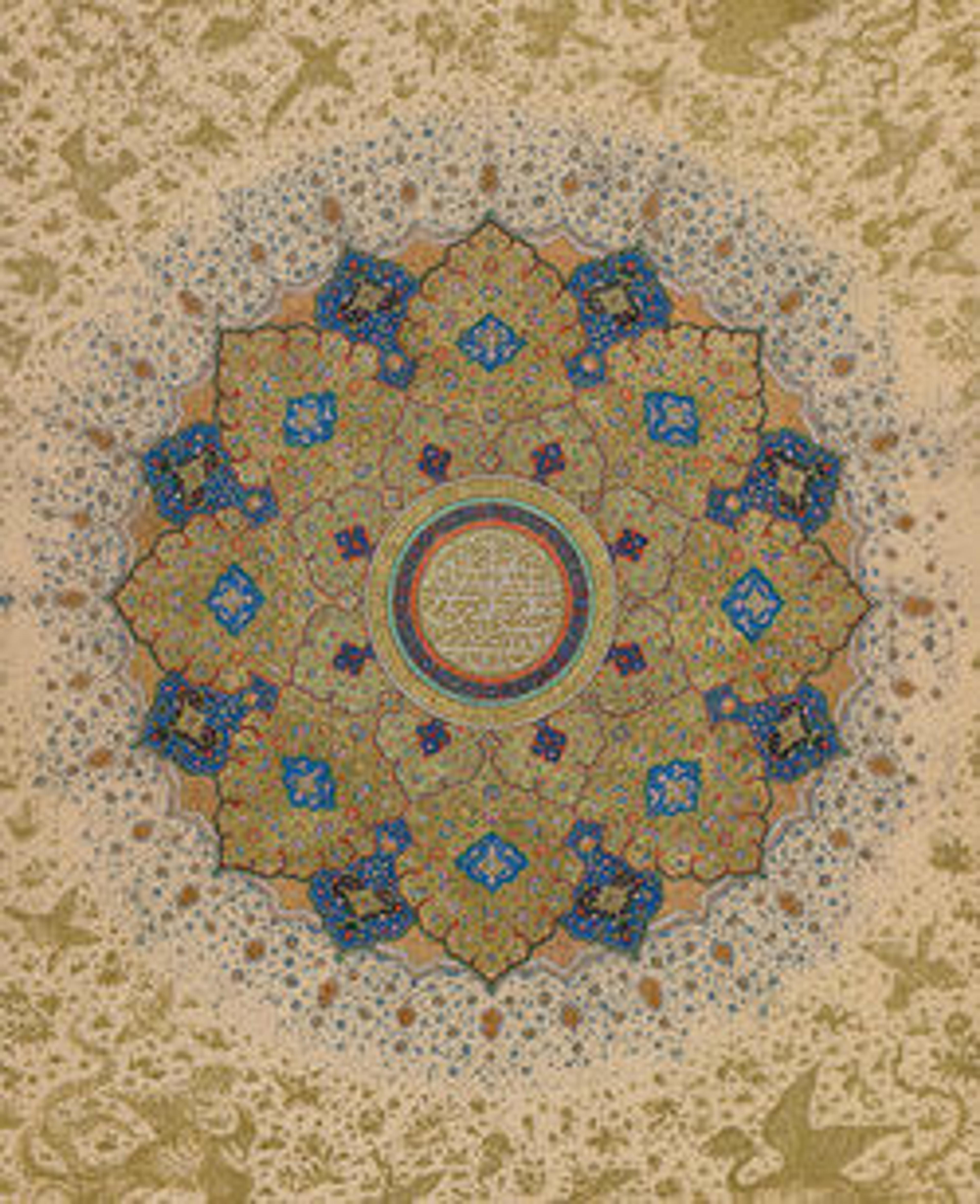Dish with Floral Designs
This dish is part of a group of polychrome ceramics which were produced in Kirman, Iran. The fortunes of this city in southeastern Iran rose under Shah ‘Abbas I (r.1587–1629) when a number of major monuments were commissioned. To decorate the new buildings and cater to the needs of new patrons, many artisans, including skilled potters, moved to Kirman.
During the seventeenth century a new style of Kirman ceramics arose based on Chinese motifs. The dish size and shape, however, were distinctly Iranian. The large size of the dish, while not unusual for Kirman wares, calls attention to the purpose for which it was made. These dishes would have been used for serving foodstuffs such as pilau from which diners would scoop portions with long-handled spoons — quite unlike Chinese food, which was eaten from small bowls. Over the course of the seventeenth century, as banquets and official receptions grew increasingly formal and extravagant, multiple dishes of this sort would have been necessary.
During the seventeenth century a new style of Kirman ceramics arose based on Chinese motifs. The dish size and shape, however, were distinctly Iranian. The large size of the dish, while not unusual for Kirman wares, calls attention to the purpose for which it was made. These dishes would have been used for serving foodstuffs such as pilau from which diners would scoop portions with long-handled spoons — quite unlike Chinese food, which was eaten from small bowls. Over the course of the seventeenth century, as banquets and official receptions grew increasingly formal and extravagant, multiple dishes of this sort would have been necessary.
Artwork Details
- Title: Dish with Floral Designs
- Date: 1670s
- Geography: Made in Iran, Kirman
- Medium: Stonepaste; polychrome painted under transparent glaze
- Dimensions: H. 2 1/2 in. (6.4 cm)
Diam. 14 1/4 in. (36.2 cm) - Classification: Ceramics
- Credit Line: Edward C. Moore Collection, Bequest of Edward C. Moore, 1891
- Object Number: 91.1.92
- Curatorial Department: Islamic Art
More Artwork
Research Resources
The Met provides unparalleled resources for research and welcomes an international community of students and scholars. The Met's Open Access API is where creators and researchers can connect to the The Met collection. Open Access data and public domain images are available for unrestricted commercial and noncommercial use without permission or fee.
To request images under copyright and other restrictions, please use this Image Request form.
Feedback
We continue to research and examine historical and cultural context for objects in The Met collection. If you have comments or questions about this object record, please contact us using the form below. The Museum looks forward to receiving your comments.
